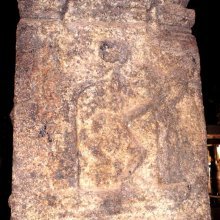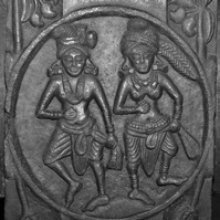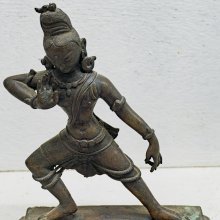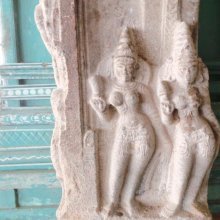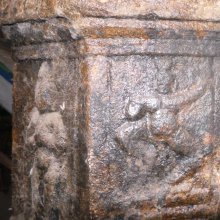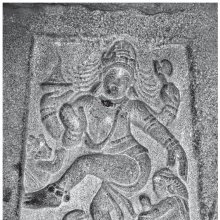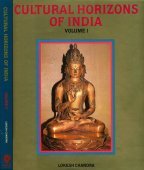Dancing: 1 definition
Introduction:
Dancing means something in the history of ancient India. If you want to know the exact meaning, history, etymology or English translation of this term then check out the descriptions on this page. Add your comment or reference to a book if you want to contribute to this summary article.
Images (photo gallery)
(+171 more images available)
India history and geography
Source: Singhi Jain Series: Ratnaprabha-suri’s Kuvalayamala-katha (history)Dancing represents a scene of human life commonly depicted on the Saṃsāracakra paintings, in ancient India, as mentioned in the Kathās (narrative poems) such as Uddyotanasūri in his 8th-century Kuvalayamālā (a Prakrit Campū, similar to Kāvya poetry).—Page 185.21 f.: Here follows a description of a printed scroll illustrating the Jaina conception of saṃsāracakra. [...] The saṃsāra-cakra illustrated the three worlds of hell, human world and the world of gods. [For example:] Birth ceremony attended by auspicious rites and music; parties of dancing and singing men and women taking part in birth celebrations.

The history of India traces the identification of countries, villages, towns and other regions of India, as well as mythology, zoology, royal dynasties, rulers, tribes, local festivities and traditions and regional languages. Ancient India enjoyed religious freedom and encourages the path of Dharma, a concept common to Buddhism, Hinduism, and Jainism.
See also (Relevant definitions)
Full-text (+1450): Nritya, Nartana, Lasa, Natya, Tandava, Lasya, Nriti, Nritta, Narta, Rinkha, Natana, Nartaka, Sangita, Laya, Prenkha, Nataraja, Sahanarttana, Vinkha, Kancani, Kasabina.
Relevant text
Search found 240 books and stories containing Dancing; (plurals include: Dancings). You can also click to the full overview containing English textual excerpts. Below are direct links for the most relevant articles:
Pallava period (Social and Cultural History) (by S. Krishnamurthy)
Dancing girls in temples < [Chapter 3 - Socio-Religious Life]
Ritual dancing < [Chapter 3 - Socio-Religious Life]
Musicians, dancers and theater artists < [Chapter 3 - Socio-Religious Life]
Brihad Bhagavatamrita (commentary) (by Śrī Śrīmad Bhaktivedānta Nārāyana Gosvāmī Mahārāja)
Verse 1.4.80 < [Chapter 4 - Bhakta (the devotee)]
Verse 2.1.187 < [Chapter 1 - Vairāgya (renunciation)]
Verse 2.1.170 < [Chapter 1 - Vairāgya (renunciation)]
Chaitanya Bhagavata (by Bhumipati Dāsa)
Verse 1.16.230-231 < [Chapter 16 - The Glories of Śrī Haridāsa Ṭhākura]
Verse 2.16.6 < [Chapter 16 - The Lord’s Acceptance of Śuklāmbara’s Rice]
Verse 3.3.212 < [Chapter 3 - Mahāprabhu’s Deliverance of Sarvabhauma, Exhibition of His Six-armed Form, and Journey to Bengal]
Abhinaya-darpana (English) (by Ananda Coomaraswamy)
The Vision of the Sacred Dance-III < [October – December, 1984]
The Vision of the Sacred Dance-II < [July – September, 1984]
Vision of the Sacred Dance < [April – June, 1984]
Vaisheshika-sutra with Commentary (by Nandalal Sinha)
Sūtra 2.2.36 (The same refuted) < [Chapter 2 - Of the Five Bhūtas, Time, and Space]
Sūtra 3.2.3 (Mind is one) < [Chapter 2 - Of the Inference of Soul and Mind]
Sūtra 3.2.4 (Marks of the existence of the Soul) < [Chapter 2 - Of the Inference of Soul and Mind]
Related products
